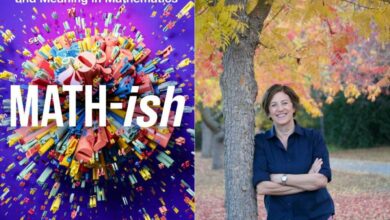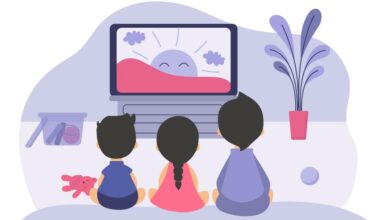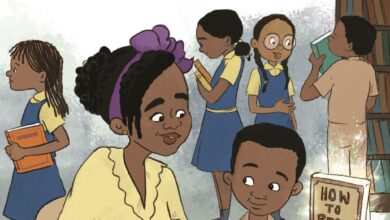AI images and conspiracy theories are driving a push for media literacy education
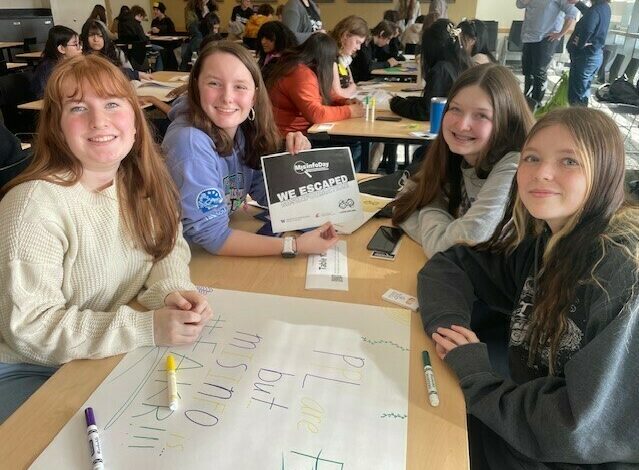
Videos, images and text created by generative artificial intelligence tools are turning up in elections, for sale on Amazon and even in court documents. Learning to identify the growing flood of deepfakes, along with online conspiracy theories, is becoming a rite of passage for students.
Earlier this month, about 500 high school students were milling about a cavernous ballroom on the University of Washington’s Seattle campus, just as the annual MisInfo Day event was about to begin.
Isabella and Jasper are two sophomores from Ballard High School. (NPR isn’t using students’ last names because they’re under 18.)
Both consider themselves relatively savvy online, but admit it’s getting harder to figure out what they’re seeing online… especially the realistic images created by AI tools.
“I feel like…being able to use AI to make images is definitely sort of problematic,” says Jasper.
“I’m actually not that confident,” said Isabella. “I feel like I’ll like fall for really stupid things and I’ll be like, ‘Oh, how did I not know this is not real?’”
Navigating exaggeration, spin and outright lies
Since its founding in 2019, MisInfo Day has grown into one of the nation’s best known media literacy events for high school students.
It originated with a popular undergraduate course at the University of Washington, “Calling Bulls***: Data Reasoning in a Digital World,” co-created by Jevin West and Carl Bergstrom, to provide their students some guidance in how to navigate the proliferation of exaggeration, spin, and outright lies that could pass for facts and evidence online.
High school teachers were looking for something similar they could bring to their students, and MisInfo Day was born.
Organizers set up multiple sessions for students to choose from, including TikTok and viral misinformation, and making sense of online rumors.
The escape rooms were among the most popular. There, the students broke into small teams and had 45 minutes to figure out if rumors a friend was passing along about a K-Pop group were true.
Part of the exercise involved looking at sets of images of human faces to figure out which were real and which were AI-generated. Some of the students debated whether a face’s teeth looked right while one student laughed that another face was “giving catfish profile,” referring to scams where someone uses a manufactured persona, often featuring an attractive image of another person, to draw in prey.
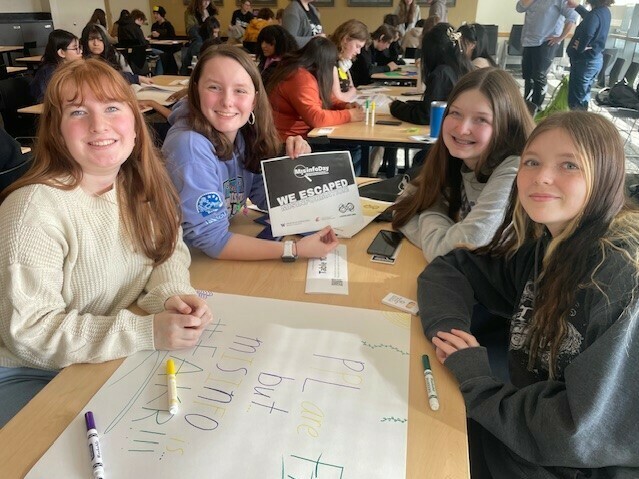
The first event in 2019 drew 200 kids from four local high schools. After a couple of years going online during the covid-19 pandemic, more than 500 students from six local schools took part in person at the Seattle event this year.
Hundreds more students attend other events hosted in collaboration with two campuses of Washington State University. This year, MisInfo Day’s organizers say 68 teachers from ten different states and three countries registered for online training with the MisInfo Day library, so they can lead the activities in their own classrooms.
Educators are trying to fill a big gap, says Jevin West, an associate dean of research at UW’s Information School who co-founded the university’s Center for an Informed Public.
“The whole motivation for this program was to spend an entire day which might be the only day that many of these students will devote to this, what I consider one of the more important things that we can be teaching our public.”
A growing demand for media literacy education
The advocacy non-profit group Media Literacy Now’s annual report shows 18 states have now passed bills pushing for media literacy education, and half of all state legislatures have held debates or votes on the topic.
A recent survey from Boston University shows 72% of adults say misinformation is a concern. But there’s a partisan gap in attitudes towards media literacy, says BU’s Michelle Amazeen
Democrats are more more likely (81%) to agree than Republicans (66%) that media literacy skills are important. Relatedly, Democrats are more likely than independents and Republicans to believe that media literacy training teaches one how to think more critically – and not what to think.
“It’s consistent with the pattern overall, that Republicans are just less trusting of media, they feel that there’s a liberal bias in the media and so they’re more likely to agree that media is trying to tell them what to think,” says Amazeen.
Jim Walsh, chair of the Washington State GOP, has criticized some of the state’s work to combat election disinformation, but he supports efforts like MisInfo Day.
“Well, like many things, the term media literacy sounds great. And it is great. If we keep it clean and clear and free of free of agendas. The risk, the challenge, is to make sure it stays free and clear, and doesn’t doesn’t end up getting hijacked by people pushing agendas of any sort,” says Walsh.
Back at Misinfo Day, a team of students from Sedro Woolley High School, north of Seattle, were the first to solve the escape room.
The winners all said they felt better equipped to assess what they see online after after the session. But the students wondered why media literacy education should be limited to teenagers.
“I think honestly, adults might benefit more from it. Because they don’t usually think about that kind of stuff. We’re growing up in a very technological era. So we know we have to, but some adults are like, ‘Oh, it doesn’t affect me. Because I didn’t grow up like that,’” says Katie, a member of the winning team.
MisInfo Day is expanding. In May, it’ll offer sessions to students in California for the first time.
9(MDAxOTAwOTE4MDEyMTkxMDAzNjczZDljZA004))
Source link


